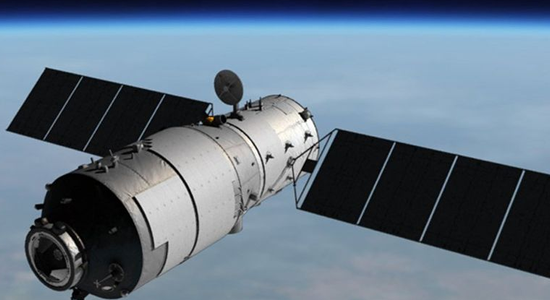Scientists monitoring defunct Chinese space station Tiangong-1, said debris may crash to Earth as early as Friday, as the station is gradually coming close to Earth.
The Tiangong-1, which was part of China's ambitious space programme, and the prototype for a manned station in 2022, was put into orbit in 2011 and five years later completed its mission, after which it was expected to fall back to Earth.
However, Time and place of impact are hard to envisage as it is no longer under control.
The latest estimate for re-entry is between 30 March and 2 April.
Most of the station is likely to burn up in the atmosphere, though some debris could survive to hit the surface of the Earth.
China confirmed in 2016, that it had lost contact with Tiangong-1 and could no longer control its behaviour, so it difficult to ascertain were it will end up.
" Re-entry will take place anywhere between 43ºN and 43ºS", which covers a vast stretch north and south of the equator," the European Space Agency (ESA) said.
ESA expects that its forecasts will become more precise closer to the weekend.
According to deputy director of the Australian Centre for Space Engineering Research, Dr Elias Aboutanios, the station's rate of descent "will continually get faster as the atmosphere that the station is ploughing through gets thicker."
"The station will eventually start to heat up as it gets close to 100km [from Earth]," he added.
This will lead to most of the station burning up and "it is difficult to know exactly what will survive since the makeup of the station has not been disclosed by China".
The deputy director said if it does burn up during night time over a populated area, it "will most certainly be visible, like a meteor or a shooting star".
Usually there is still communication with the craft or satellite. That means ground control can still influence its course and steer it to a chosen crash site.
The debris is steered to crash near what's called the oceanic pole of inaccessibility, the furthest place from land. It's a spot in the South Pacific, between Australia, New Zealand and South America.
Over an area of approximately 1,500 sq km (580 sq miles) this region is a graveyard of spacecraft and satellites, where the remains of around 260 are believed to be scattered on the ocean floor.
In 2001, China launched space vessels carrying test animals and in 2003 sent its first astronaut into orbit, making it the third country to do so, after the Soviet Union and the US.
The programme for a space station started off in earnest with the 2011 launch of Tiangong-1, or "Heavenly Palace".
The small prototype station was able to host astronauts but only for short periods of several days. China's first female astronaut Liu Yang visited the station in 2012.
It ended its service in March 2016, two years later than scheduled.
At present, Tiangong-2 is in operation and by 2022, Beijing plans to have number 3 in orbit as a fully operational manned outpost in space.



















